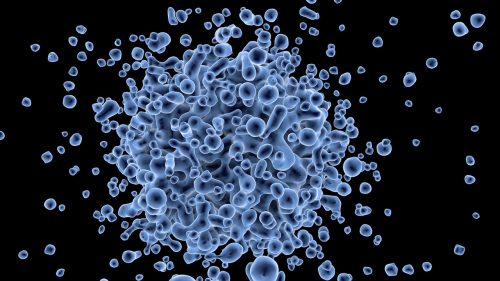Imagine you have a factory that produces flaky concrete, and this concrete is shipped to construction sites across the city. You discover that one building has a crack in the roof, another has a crack in the walls, and a third has a crack in the basement. All of these incidents can be traced back to the brittle concrete produced by this one factory. Now imagine that, another day, an earthquake causes similar cracks in buildings made from smooth, unblemished concrete. What’s the difference? In this analogy, the first scenario represents the genetic contributions to diseases, while the second represents the environmental factors that affect diseases.
This is how Andrey Rzhetsky, a researcher at the University of Chicago, explains the different contributions of genetics and the environment to diseases. In the past, disease classifications were largely arbitrary, based mostly on vaguely similar features or even cultural similarities. However, in an August 2017 study published in Nature Genetics in August 2017, researchers from the University of Chicago, Microsoft Research, and Vanderbilt University, developed a largely computational method of reclassifying diseases based on their shared genetic and environmental correlations. By analyzing data from over one-third of the U.S. population, they discovered that complex diseases might be unexpectedly more or less interconnected than we previously thought.
Diseases that can be traced back to a variation in a single gene are classified as Mendelian disorders, whereas those affected by both genetic and environmental factors are complex disorders. The researchers on the study examined vast amounts of health insurance data, ultimately deriving genetic and environmental correlations for a wide range of twenty-nine complex diseases, including bipolar disorder, type I diabetes mellitus, asthma, migraine, IBS, and cystitis/urethritis. Individual data were then grouped by families to better determine how diseases can occur non-randomly. The researchers used statistical models to estimate genetic correlations, which suggested that even apparently unrelated complex diseases share some similarities.
According to Rzhetsky, if the genetic correlation for a certain disease is low, the contribution must be mostly environmental. “This is good because we can prevent the diseases by putting patients away from the responsible environmental factors,” Rzhetsky said. For better visualization of their findings, the researchers transformed their genetic and environmental correlations into relative distances in a refined tree model in order to portray the inherent similarities and differences between the selected diseases. Diseases with shorter branches in the model were more correlated and thus more similar than those separated by longer branches.
As a result of the reclassification, the researchers were able to easily identify new, unexpected relationships between the complex diseases. For instance, a migraine, previously assumed to be similar to neuropsychiatric conditions, was found to have a closer distance to general immune system diseases, such as irritable bowel syndrome and cystitis/urethritis.
Hallie Gaitsch, an undergraduate researcher from Yale University who also worked on this study, best portrays the significance of the research with the following scenario: no matter how many patients from different families with different genetic diseases visit a one doctor, that doctor would still not be able to grasp the links between the familial genetic and environmental contributions of these diseases. The possible onset of a complex disease could significantly increase with another related one, but comorbidity in patients could be masked for years since some diseases are assumed to have such vastly different causes and origins. Only with the enormous computational power utilized in this study did these unforeseen similarities between apparently different diseases come to light.
An important implication is the potential use of pre-existing tools and treatment to treat similar diseases, or perhaps even discovering that a drug might have adverse effects on another disease. This research establishes a strong foundation in its interpretation of the intertwined relationship between genetics and the environment on complex diseases. “Our work is a hypothesis-generator for other scientists to use what we’ve shown statistically in going forth with their own experiments and seeing these new relationships,” Gaitsch said. She believes that future research could not only more deeply analyze the interconnectedness of certain diseases, but also test the efficacy of treatments on these closely related diseases.

